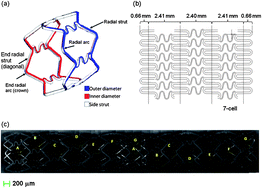A method was developed to assess the durability of drug-polymer coatings, such as those found on drug-eluting stents (DES). The method is based on scanning electron microscopy (SEM) and intensity threshold detection for converting qualitative SEM images to quantification of defects on a DES surface. Previously, a method was developed to fatigue stents by subjecting them to pulsatile loading conditions. The particles generated during fatigue testing were captured and evaluated for chemistry, size, and quantity. The amount of particulates observed from a commercially available DES product was low and on the same order of magnitude as the blanks/controls after acute and chronic simulated in vitro fatigue testing. These results are confirmed using the method developed in this work by evaluating the stent surface before and after chronic fatigue cycling. The relative change in surface defect area during the entire pulsatile fatigue testing was insignificant (<3%), indicating the polymer coating maintains remarkable durability even when subjected to deployment, overexpansion, and repetitive fatigue cycling. Further chemical analysis by FTIR microscopy of individual particles supports the claim that the polymer coating does not shed appreciably during the testing.

